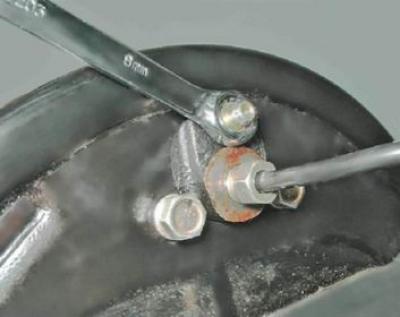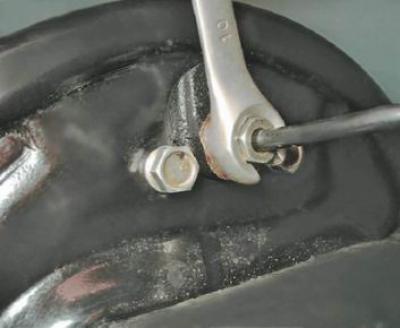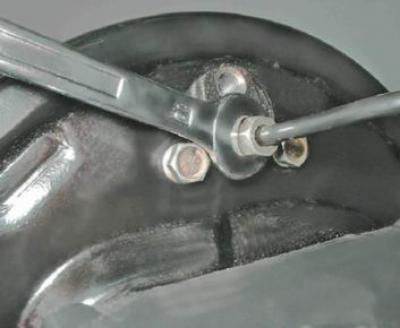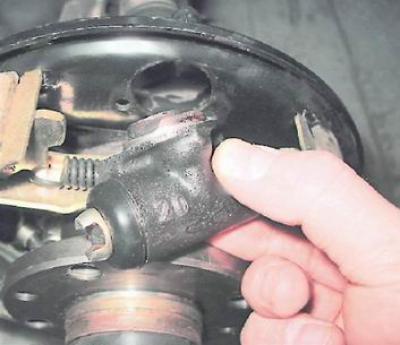To perform the work, you will need a special key for the bleed fittings of the working cylinders and fittings of the brake pipes.
Removing
1. Remove the brake drum (see "Brake drum - removal and installation").
2. Raise the parking brake lever all the way up.
3. Remove the protective rubber cap from the bleeder of the working brake cylinder and a special key or ring spanner by 8 mm (a socket wrench of the same size will also work) fully unscrew the fitting.

4. We process the fitting of the brake pipe with a penetrating lubricant.
Warning! When performing the following operation, make sure that when unscrewing the fitting, the tube does not rotate with it. If the tube is sour in the fitting, replace it.
5. Using a special key, loosen the brake pipe fitting.

6. Finally unscrew the fitting with an open-end wrench by 10 mm.

7. Key by 10 mm unscrew the two bolts securing the cylinder.

8. To prevent brake fluid from flowing out of the tube, we put on it the rubber cap of the bleeder fitting.
9. Remove the cylinder from the shield.

Installation
1. We clean the parts of the brake mechanism from dirt and rust, degrease the working surface of the drum, remove slight oiling of the brake pads with sandpaper.
2. Install the new cylinder in reverse order.
3. Install the brake drum.
4. We remove air from the hydraulic drive system (see "Hydraulic brake drive - pumping").
